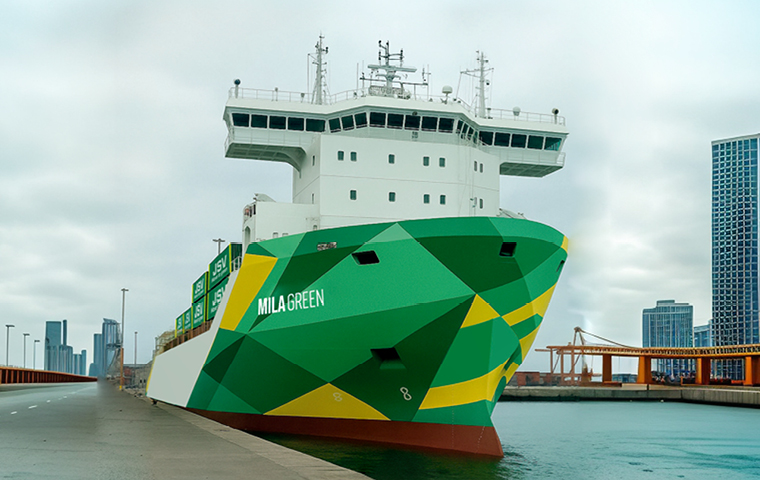
JSV Group acquires its second next-generation, low-emission vessel
JSV Group acquires its second next-generation, low-emission vessel

Key performance indicators (KPIs) are essential tools in logistics for measuring and evaluating process performance.
These indicators facilitate the identification of areas for improvement and optimization in the supply chain. Implementing KPIs allows companies to increase operational efficiency and make more informed decisions.
Its proper use can have a positive impact on profitability and customer satisfaction.
Key performance indicators are essential metrics in the logistics sector. Their proper use allows for evaluating and improving the performance of logistics processes, as well as optimizing the supply chain.
KPIs in logistics are tools used to measure the performance of various activities within the supply chain. They are characterized by being specific, measurable, achievable, relevant, and time-bound. Each KPI is designed to monitor a particular part of the logistics process, whether related to transportation, inventory management, or warehouse efficiency.
These indicators not only reflect the current status of processes but also compare results with predefined objectives, allowing for the identification of areas that need attention. Selecting appropriate KPIs is crucial, as they must align with the company’s strategic objectives.
KPIs are essential for logistics companies, as they provide a clear view of operational performance. Through these indicators, organizations can identify inefficiencies and bottlenecks in their processes, enabling informed decisions to optimize resources and improve service quality.
In an increasingly competitive business environment, having tools that facilitate the evaluation and continuous improvement of logistics processes is essential. KPIs provide the information needed to proactively address industry challenges and respond to market demands.
The implementation of KPIs in the logistics sector brings numerous benefits that directly impact business operations. Some of these benefits include:
| Benefit | Description |
|---|---|
| Improved decision-making | Having accurate and reliable indicators allows managers to conduct in-depth analyses of the performance of different logistics areas. Decisions are based on concrete data, reducing errors and increasing the effectiveness of strategies. |
| Increase in operational efficiency | KPIs help detect inefficient processes. This visibility allows for implementing targeted improvements to optimize time and resources and reduce operating costs. |
| Impact on the company's profitability | Efficient KPI management directly contributes to increased profitability by reducing waste, improving profit margins, and increasing customer satisfaction. |
| Greater control and monitoring | KPIs allow for real-time performance monitoring, facilitating constant control of logistics operations. |
| Early detection of problems | Continuous measurement allows deviations or incidents to be identified quickly, facilitating immediate corrective action. |
| Alignment with strategic objectives | The indicators allow the logistics department to work in alignment with the company's overall objectives, ensuring consistency in all operational decisions. |
| Driving continuous improvement | KPIs foster a culture of continuous improvement by setting goals, measuring results, and promoting continuous optimization. |
| Greater customer satisfaction | Improved delivery times, quality control, and service efficiency directly impact a better end-customer experience. |
The different types of KPIs in logistics allow companies to evaluate and optimize their operations through specific metrics. Each category offers a distinct view of performance, making it easier to identify areas that require attention and improvement.
Utilization KPIs focus on measuring how logistics resources are used. These indicators are vital to ensuring that available assets are utilized to the fullest, resulting in efficient resource use.
This KPI assesses the degree to which resources, such as vehicles, storage space, and personnel, are being utilized. A high level of utilization indicates effective management, while low utilization may indicate inefficiencies or the need for operational adjustments.
This indicator compares the total available capacity of logistics resources with the capacity actually being used in a given period. It helps identify any idle capacity and assists in planning future investments in infrastructure or human resources.
Performance KPIs provide insight into the efficiency of logistics processes and help assess whether established operational standards are being met.
This KPI measures the total time it takes from receiving an order to completing the delivery process. Reducing this time is critical to improving customer satisfaction and optimizing operational efficiency.
This indicator measures the proportion of orders delivered on time. A high fulfillment rate is crucial to maintaining customer trust and ensuring that commitments are fully met.
Productivity KPIs allow organizations to compare results achieved with expected objectives. These indicators are essential for measuring performance against established goals.
This KPI assesses how each logistics process is performing compared to initial expectations. This comparison helps identify deviations and areas where performance could be improved.
This indicator provides a comprehensive view of how different logistics processes, such as inventory management, order fulfillment, and transportation, are carried out. Proper monitoring allows for the implementation of continuous improvement practices that optimize the supply chain.
KPIs in logistics are essential for measuring and evaluating performance in various processes. Specific examples of KPIs in various functional areas within logistics are described below.
Transportation KPIs allow you to analyze the efficiency of goods movement throughout the supply chain. These metrics can be used to determine the carriers’ ability to meet established deadlines.
This indicator measures the proportion of deliveries made within the agreed timeframe. A high percentage of on-time delivery is crucial to maintaining customer satisfaction. This KPI can be calculated as:
This indicator relates transportation costs to generated sales. It allows us to analyze whether transportation expenses are sustainable in relation to the revenue generated. It is calculated as:
This KPI measures the average number of days deliveries are delayed from the promised date. A low result indicates greater efficiency in transportation planning and execution.
Order management is a key area where KPIs can directly impact customer experience and internal company operations.
This indicator accounts for the total number of orders processed and shipped in a given period. It allows for assessing the company’s operating volume and production capacity.
This KPI monitors service quality and timeliness by comparing the number of products delivered without errors with the total number of products shipped. It is defined as:
Effective inventory management is critical to ensuring products are available when customers need them. The following KPIs help monitor this area.
This indicator shows the frequency with which inventory shortages occur, preventing demand from being met. A high level of stockouts can have a negative impact on customer satisfaction.
Inventory turnover measures the number of times inventory is turned over in a specific period. A high value indicates good inventory management and efficient product turnover.
This KPI assesses the costs associated with clearing unsold products. High levels of obsolescence can result in significant losses, reinforcing the need for proactive inventory management.
These indicators help control and optimize operations within the warehouse, where a large quantity of products and materials are handled.
Receiving efficiency measures the warehouse’s ability to handle new items and returns. A high level of efficiency indicates a well-managed process, which reduces wait times and improves operational flows.
This KPI refers to the percentage of correctly prepared orders relative to the total number of orders shipped. It is essential for maintaining customer satisfaction and avoiding returns due to preparation errors.

JSV Group acquires its second next-generation, low-emission vessel

This container offers every advantage: high capacity and excellent maneuverability.